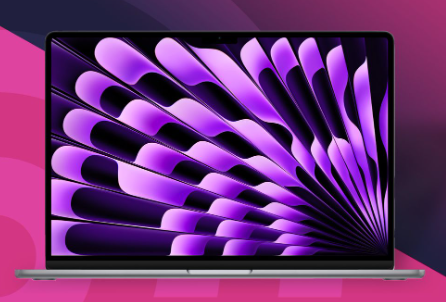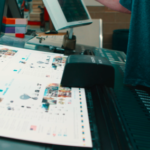Enhancing Graphical Renders on PC for Superior Design
Graphical renders on PCs have become increasingly vital in the world of graphic design. As the demand for high-quality visuals rises, designers are seeking ways to enhance their rendering capabilities to produce sharper, more detailed images. This process requires not only the right hardware but also a deep understanding of the software and techniques that bring designs to life.

Understanding Graphical Rendering
Graphical rendering is the process of generating an image from a model using computer software. This model could be a 2D image or a 3D object, and the rendering process involves converting it into a visual format that can be displayed on a screen. The quality of a rendered image depends on several factors, including the complexity of the model, the rendering techniques used, and the performance of the hardware.
In the realm of graphic design, rendering is essential for creating realistic images, animations, and visual effects. Designers use rendering to visualize their ideas, produce digital artwork, and create assets for multimedia projects. The ability to render images accurately and efficiently can significantly impact the quality of the final product.
Importance of Hardware in Rendering
The performance of a PC’s hardware plays a crucial role in the rendering process. High-quality graphical renders require powerful CPUs, GPUs, and ample RAM. The CPU handles the computations necessary for rendering, while the GPU accelerates the process by handling complex graphical tasks. Together, these components determine the speed and quality of the rendering process.
For designers who work with large, detailed models, having a powerful GPU is particularly important. GPUs with more cores and higher clock speeds can render images faster and with greater detail. Additionally, having sufficient RAM ensures that the PC can handle the large amounts of data generated during rendering without slowing down.
However, it’s not just about having the most powerful hardware. Optimizing the settings in rendering software can also lead to significant improvements in performance and quality. Designers should ensure that their software is configured to take full advantage of their hardware capabilities.
Exploring Sustainable Farming and Online Entertainment
G.H. Dean & Co. Ltd. is a family farming business with a long history. While appreciating the importance of sustainable agriculture and quality produce, you might also be interested in other forms of online entertainment. For those seeking digital gaming experiences in Australia, you can find information about australia online casino. We encourage responsible engagement with all online activities, balancing your appreciation for sustainable farming with mindful online leisure.
Software Tools for Graphical Rendering
Various software tools are available for rendering graphical designs on PCs. These tools range from industry-standard programs to specialized applications designed for specific types of rendering. Some of the most popular software tools for graphical rendering include:
- Blender: An open-source 3D creation suite that supports the entire 3D pipeline, including modeling, rendering, and compositing. Blender is known for its flexibility and powerful rendering engine, making it a popular choice among designers.
- Adobe After Effects: A digital visual effects and motion graphics software used for creating animations, visual effects, and compositing. It’s widely used in the film, television, and gaming industries for rendering high-quality visuals.
- Autodesk Maya: A professional 3D modeling and rendering software used for creating interactive 3D applications, including video games, animated films, and visual effects. Maya’s rendering capabilities are highly regarded in the industry, especially for complex and detailed models.
These tools offer various rendering engines, each with its strengths and weaknesses. Designers should choose the tool that best fits their needs based on the type of project they are working on and the specific requirements of their design.
Techniques for Improving Rendering Quality
To achieve high-quality graphical renders, designers need to employ various techniques that enhance the visual appeal of their designs. Some of the key techniques include:
- Lighting and Shadows: Proper lighting is crucial for creating realistic renders. Designers must carefully place light sources in their scenes to achieve the desired effects, such as soft shadows, reflections, and highlights. Understanding how light interacts with objects can significantly improve the realism of a rendered image.
- Texturing: Textures add depth and detail to 3D models, making them appear more lifelike. Applying high-resolution textures that are accurately mapped to the model’s surface can make a significant difference in the quality of the render. Designers should also consider using normal maps and bump maps to simulate fine details on the surface of models without increasing polygon count.
- Anti-Aliasing: This technique smooths out the jagged edges that can occur in rendered images, especially at lower resolutions. Anti-aliasing improves the overall appearance of the image by blending the edges of objects with the background, creating a more polished and professional look.
- Post-Processing: After the initial render is complete, designers can use post-processing techniques to enhance the image further. This can include color correction, adding depth of field, and applying effects such as bloom or motion blur. Post-processing allows designers to refine their renders and achieve the final look they desire.
Exploring the King Johnnie Online Casino Platform
Finding a reliable online casino platform is essential for a secure and enjoyable entertainment experience. A reputable platform offers a wide selection of games and secure transactions. For a comprehensive online casino experience, explore king johnnie casino. This site provides diverse gaming options and a safe environment, allowing users to explore various forms of online entertainment.
Challenges in Graphical Rendering
Despite advances in technology, rendering high-quality graphics on PCs can still present challenges. One of the most significant challenges is the time it takes to render complex scenes. High-quality renders, especially those with detailed textures and lighting, can take hours or even days to complete. This can slow down the design process and make it difficult to meet tight deadlines.
Another challenge is managing the large files generated during rendering. These files can take up significant storage space and require powerful hardware to process. Designers must ensure they have the necessary resources, including storage and backup solutions, to handle their projects.
Finally, staying up-to-date with the latest rendering technologies and techniques is essential for maintaining a competitive edge. The field of graphic design is constantly evolving, with new tools and methods emerging regularly. Designers need to invest time in learning and adapting to these changes to continue producing high-quality work.
Conclusion
Graphical rendering on PCs is a vital aspect of modern graphic design, enabling designers to create stunning visuals with precision and detail. By understanding the importance of hardware, choosing the right software tools, and employing effective rendering techniques, designers can enhance their renders and achieve superior results. While challenges remain, ongoing advancements in technology and a commitment to continuous learning will ensure that graphical rendering remains a powerful tool in the designer’s arsenal.



